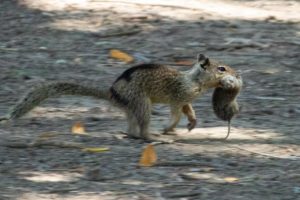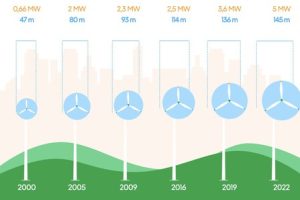Some experts are studying a series of signs inscribed on the slate tablet from the Tartessian site of Casas del Turuñuelo, (Guareña, Badajoz, Spain), whose discovery we recently reported. According to the first interpretations, this set of signs must be an alphabet from a southern Paleo-Hispanic script.
The new study is being carried out by researchers from the Institute of Archeology of Mérida (IAM, a joint center of the Government of Extremadura and the Higher Council for Scientific Research (CSIC) in Spain), with the collaboration of an expert from the University of Barcelona (UB ).
Joan Ferrer i Jané, a researcher attached to the LITTERA group at the University of Barcelona, learned through the media about the discovery of a slate plaque with the silhouettes of three warriors at the Badajoz site. “Beyond the figures, when I looked at the plaque I saw that on one of the sides there seemed to be a Paleo-Hispanic sign, a sign that cannot be confused with any other. Other traces compatible with signs of a known sequence were also seen,” he explains. Ferrer contacted the team at the Institute of Archeology of Mérida, responsible for these archaeological excavations, and asked them for partial macro photographs of the area in order to corroborate his suspicions. “After studying the images, everything indicates that it is a southern script alphabet with an initial sequence that is almost the same as documented in the Espanca alphabet, except for the eleventh sign, which has a special shape,” indicates Ferrer i Jane.
The alphabet is a very conservative inscription. In fact, today the initial sequence ABCD, which comes from the Phoenician, is maintained in the alphabets. The one found in Guareña begins with the sequence “ABeKaTu”, which would be its equivalent, and would have 21 signs written in the direction from left to right following the outer edge of the plaque. “At least 6 signs would have been lost in the split area of the piece, but if it were completely symmetrical and the signs completely occupied three of the four sides of the plate, it could reach 32 signs, so the lost signs could reach to be eleven or perhaps more if a possible sign, “Tu”, isolated in the lateral quarter, were part of the alphabet,” comments Ferrer i Jané, who adds that “it is a shame that the final part of the alphabet has been lost since That is where the most pronounced differences tend to be.”
Esther Rodríguez González, CSIC researcher and one of those responsible for the archaeological excavations in Casas del Turuñuelo, highlights that from the first moment of finding the slate tablet she was aware that “the volume of information it contained was greater even than that of the faces themselves found [de los guerreros]”. In addition to the silhouettes of human figures, scientists had already observed several circles and lines that suggested that the plate could be analyzed at different levels.
Currently, Esther Rodríguez and the rest of the IAM researchers, together with Joan Ferrer, are studying the scope of the identified signs and the importance they may have as samples of southern Paleo-Hispanic writing.
Alphabet found in the piece of slate from the Casas del Turuñuelo site. (Image: JFiJ/CSIC)
three alphabets
Paleohispanic writings are divided into two families: the northeastern family and the southern family. The border between one and the other would be, approximately, south of Valencia. All of them derive from Phoenician writing, from which a first adaptation was made to what is called an original Paleo-Hispanic sign and then two different adaptations were produced, one in the north and another in the south. The latter is what gave rise to the family of southern scripts, to which this alphabet would correspond.
So far, there is only evidence of the existence of two more alphabets of southern writings. According to the first investigations, the Turuñuelo alphabet repeats, at least, the first 10 signs of the alphabet from the Espanca site, in Castro Verde (Portugal). “This alphabet has 27 signs and is the only complete one we knew to date. Another was found in the excavation of Villasviejas del Tamuja (Cáceres) but it is very fragmented, it only has some central signs. Therefore, Guareña would be the third and would provide a lot of information,” says Ferrer.
Collaboration between researchers will help determine whether the Casas del Turuñuelo alphabet can be classified with any of the already known scripts or if it should be considered an independent southern script. “In any case, it confirms that many more inscriptions are hidden in this site that we hope will come to light in future campaigns,” concludes the specialist in Paleo-Hispanic writing.
The Casas del Turuñuelo site is located in the Las Vegas Altas del Guadiana region, near the mouth of the Búrdalo River. In 2015, its first excavation campaign began and, currently, the research staff is immersed in the sixth, where the discovery of the east door of the building is framed. Its uniqueness is based especially on its excellent state of conservation, which makes it possible to document construction techniques and architectural solutions that, to date, had not been documented in a Tartessian site. (Source: CSIC)








![[Img #74678]](https://thelatestnews.world/wp-content/uploads/2024/12/See-schizophrenia-and-bipolar-disorder-in-face-shape-150x150.jpg)

![[Img #72841]](https://thelatestnews.world/wp-content/uploads/2024/06/They-investigate-a-Paleo-Hispanic-alphabet-from-about-2500-years-ago.jpg)
![[Img #74678]](https://thelatestnews.world/wp-content/uploads/2024/12/See-schizophrenia-and-bipolar-disorder-in-face-shape-300x200.jpg)


Add Comment